Catherine Cookson, the best-read author, was once the manager of the laundry in the Hastings workhouse. But her life was transformed by a shy local school master - who also tried to teach Steve Peak some maths. Steve sums up Tom Cookson’s role in helping Catherine become Britain’s top selling novelist.
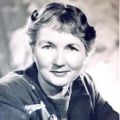 |
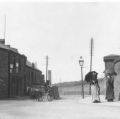 |
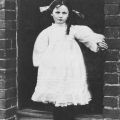 |
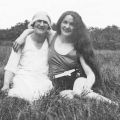 |
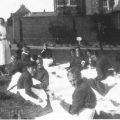 |
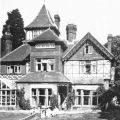 |
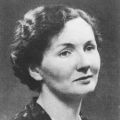 |
 |
 |
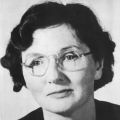 |
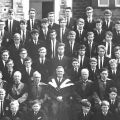 |
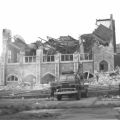 |
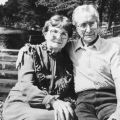 |
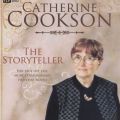 |
Catherine Cookson, born in 1906, was brought up in great poverty, the illegitimate daughter of a Tyneside barmaid. Yet by 1990 she was Britain’s 17th richest woman, and in the mid-90s she was the country’s most-read author, writing nine out of ten of all borrowed library books. When Dame Catherine died, in June 1998, she had completed 103 novels, sold over 120 million books worldwide and had £20 million in the bank - all of which went to charities.
Catherine and Tom Cookson had very different personalities. She came from the poorest working class background, while he was an Oxford graduate. She was strong-willed and dominant, while he was soft-voiced, sensitive and quiet. Catherine was said to be the driver in their relationship, with Tom the passenger. But despite the problems he had with her, Tom always loved her, and he died of a broken heart just 17 days after her death. His obituary in the Times described him as “the man behind the woman”.
Catherine suffered depression for much of her life, not least because of her inability to have a child. It was the still-birth and miscarriages of four children during the Second World War that pushed her into a 15-year period of mental breakdown, despair and near suicide. Tom rescued her from this and gave her the confidence and inspiration to start writing. Her novels reflected much of the pain of her life, with many of them being set in the rundown north east.
Tom was a stimulation not only to Catherine, but also to many of his pupils at Hastings Grammar School, now the William Parker. He was not the most skilful teacher, but he treated us youngsters in a decent, straightforward and human manner, unlike a number of his staff-mates. Sion Jenkins would have felt very much at home in Hastings Grammar School.
Catherine Cookson was born as Catherine (Katie) Ann McMullen on 20 June 1906. She never knew her father and was brought up by her illiterate and uneducated step-grandfather John McMullen, her grandmother Rose and the woman she initially thought to be her sister, Kate Fawcett. It was only when Catherine was seven that she discovered that the alcoholic Kate was actually her mother.
Catherine was born at 5 Leam Lane, at the entrance to the Tyne Dock in East Jarrow, near the mouth of the River Tyne. This was a heavy industrial landscape of docks, jetties, railway lines, bridges, warehouses and workshops, interspersed with farmland, nursery gardens and a few rows of houses for local workers. When she was five Catherine’s family moved round the corner to 10 William Black Street, part of a small estate.
Tyneside was one of the poorest areas of Britain, and in these bleak surroundings fatherless Catherine was brought up by an impoverished family, in constant fear of the workhouse. Her childhood was deeply scarred by abuse, violence, alcoholism, shame and guilt, wounds she carried all her life and which came across so many times in her novels. She always had negative, self-destructive tendencies that damaged both her personality and her relationships with other people.
Catherine soon became determined to escape the slums and misery she was experiencing as a youngster. And she quickly realised that she had to become tough and hard-hitting to fight her way into a better life, which she felt she deserved. But her neighbours grew to dislike the ‘hoity-toity’ Catherine that began to emerge, and although she eventually escaped Tyneside, she did it at the expense of having few friends.
The young Catherine was an avid reader who decided she would like to be a writer. She wrote her first short story, ‘The Wild Irish Girl’, when she was eleven, and sent it to the local evening paper, but it was returned unpublished.
Catherine left school at 13. Her first work was as a maid and then a self-employed artist. In 1924, aged 18, she became a laundry checker at the Harton workhouse, close to Tyne Dock. Over the next five years she tried to better herself, including having several boyfriends. But these relationships were all unsuccessful and by 1929 she felt she could achieve no more in the north east, and that she should go south.
In March 1929 Catherine moved to Essex, becoming a laundress at a workhouse near Clacton. Then in December that year she successfully applied for a well-paid job - £3 6 shillings a week - as head laundress at Hastings Workhouse. She took up lodgings in Clifton Road, Ore, just up the hill from the workhouse in Frederick Road, and started work there in February 1930. Catherine liked Hastings, describing it later as “another world, in which everything moved at an easy-going pace and no one looked poor or even drab”. And in this refreshing town she aimed to start her better life.
But it is in Hastings that Catherine’s life became more culturally complicated and ceased to fit into the classic working class mould that she tried to paint in her later life. She seemed to start living what today would be called a bisexual life, although then it was unmentionable. She switched from being what she portrayed as a straight working class northern girl to a well-off southern woman. Within a few months she became close friends with a masculine Irish woman, Nan Smyth, and they started sharing a flat in West Hill House in the Old Town, in December 1931. Then Catherine invited her still-drunken mother Kate to move in as well, but this was quickly seen to be mistake. So Catherine sought the home of her dreams - and found it in Hoads Wood Road, off Elphinstone Road.
In 1933 she managed to take out a £1,000 mortgage on a very large ‘gentleman’s residence’ called The Hurst, a Victorian 14-bedroom mansion in large grounds.
This she turned into a combined old people’s home, lodging house and nursing home, run by herself, Kate and Nan. Photos of Catherine in The Hurst’s garden in the 1930s show Catherine enjoying a life that seemed to bear little relationship to the north east and her childhood. But Kate and Nan were very difficult to live with, and Kate was forced to move back to West Hill House in 1935, and Nan left in 1938.
Catherine developed her first serious relationship with a man in 1937, when she met Tom Cookson. It was said to be love at first sight. Catherine recalls in her autobiography ‘Our Kate’: “In that first second of meeting, fate was fixed for both of us. It happened as quickly as that.” Tom said: “My life only began when I met her. Everything stems from that.”
Tom was born in 1912, the son of a verger at a church in Chingford, Essex. He went to a local grammar school and then to Oxford University, where he graduated with a maths degree in 1935. He started as a maths teacher at Hastings Grammar School, in Nelson Road, in 1936.
Tom had a very different personality to the loud and pushy Nan. He was small - only 5 feet 4½ inches tall - and shy. But he had a gentle firmness and genuine, supportive interest in other people that made him especially attractive to women, such as Catherine, who needed a father-figure. In 1937 Tom moved in with Catherine, who then forced out Nan a year later.
Catherine left her job at the workhouse in July 1939, and she married Tom in June 1940 in the St Mary-Star-of-the-Sea Church in Hastings High Street. In December that year, their first baby was born. But he was three months premature - and he was dead. They lost three more babies in the next four years. Catherine had missed family life as a child, and now she could not create her own family. This tragedy plummeted her into many years of severe depression and mental anguish that only began to lift at the end of the 1950s.
Catherine began writing her first novel - ‘Kate Hannigan’ - in 1946 to try and break away from her psychological problems. It was published in 1950, prompting her into almost non-stop writing for the rest of her life. She often wrote two books a year, although she did not become most popular until the late 1960s. It was in 1969 that ‘Our Kate’ was published, and it was one of her first big successes, but it had taken 12 years to write.
In 1953/4 Catherine and Tom moved home, to a smaller house called Loreto - 81 St Helens Park Road. This six-bedroomed, better-built property had a swimming pool and 2.5 acre garden, and was beautifully sited on the edge of St Helens Wood. The garden of The Hurst has had several houses built in it, and a planning application for No 81 wants to put three properties there.
In the early 1960s, the youngsters at Hastings Grammar School (myself included) were still unaware of the teacher’s wife who was soon to become world-famous. All we knew was that one of the few decent teachers had a missus who seemed to help him, while he helped us to face up to unfriendly surroundings at the school and in the world around.
The Grammar School was a watered-down imitation of a public school, symbolised in the long black cloaks all teachers had to wear. Cookie, as Tom was known, was not one of the number of teachers who seemed to be suffering from some little mental difficulty. It was not Cookie that drove one of my school-mates to suicide, or forced another to start sobbing uncontrollably in the middle of a lesson until he was led out, never to be seen by us again. You did not have to keep your back to the wall if you passed Cookie in a corridor. And it was not Cookie that took obvious delight in whipping minor offenders with a cane or that sent them home if their hair was an inch too long (that was the violent headmaster George Henshall).
Cookie was one of the handful of staff you could talk to openly, without fear of … something unknown. And the delight of his lessons was that he had almost as little interest in maths as the rest of us. It was difficult to do well in one’s maths exam when your teacher frequently stopped halfway through lessons and started lecturing on the problems of modern society or the closeness all humans should feel towards trees. He could even give us useful advice on playing snooker!
Many of us liked Cookie, but he did not like all of us. He was clearly appalled by several of my class-mates whose main ambition in their last year, 1963/4, was to join the military police in Britain’s African colony Rhodesia (now Zimbabwe) so that they could ‘shoot blacks’. I remember how Cookie stood at the front of several maths lessons staring wide-eyed at this group of racists, sitting in front of me, while they joked about what they would be going to do with guns. He was unable to say anything, but he kept twisting his cloak round and round his arms.
Cookie retired from teaching in 1969 and became Catherine’s full-time helper and organiser. But he seems to have been a sad man. The Cookson biographer, Piers Dudgeon, in his book ‘Kate’s Daughter’, believes Tom was unhappy for much of his married life. Dudgeon quotes Catherine’s cousin Sarah as saying Catherine had “a lot of hate” in her, with her only love being for Tom.
“He [Tom] had a real up-and-downer with her. Whatever it was about I don’t know, but whatever happened between them in their life, Tom was always the one who had to say sorry. He always had to go and kneel by her bed … She twisted things round not just with him but with anybody. I think she didn’t like people to be too happy. She seemed to resent if people were happy, too content.”
In August 1976 Catherine ended nearly half a century of self-imposed exile, when she moved back to the north east, where she and Tom lived for the rest of their lives. By the mid-1970s she was known around the world as an author. In 1976 she was awarded an OBE, and was made a Dame in 1993. But her health was bad. She had five heart attacks, a major operation, pneumonia, vascular disease and anaemia. In her last years she was nearly blind.
Despite her difficult personality, she was very generous in helping the poor, making many charity donations. But this brought strains. In 1992, with Tom recovering from stress linked with her huge mailbag, she said Britain had become a “nation of beggars” and vowed in future to ignore the many begging letters she had received up until then.
Catherine died at 12.30pm on Thursday 11 June 1998 at her home, near Jesmond Dene, Newcastle-upon-Tyne. Tom died 17 days later. Neither had close relatives, and in his will Tom left all their £20 million savings to charities to help alleviate the sufferings of those afflicted as Catherine had been all her life.
The Storyteller DVD - on Amazon